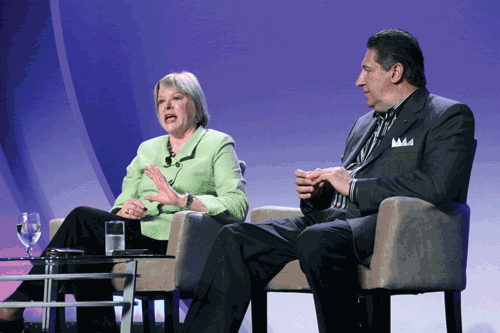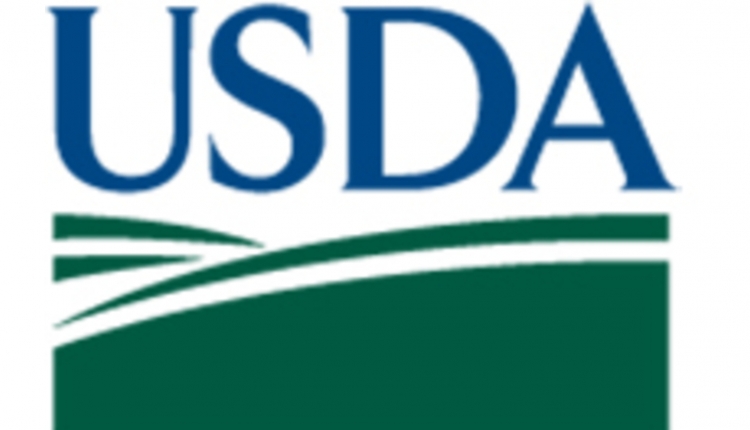
Future dairy policy was a prevailing theme during presentations and in hallway dialogue at the 26th annual Dairy Forum held in Miami, Fla., in late January. Sponsored by the International Dairy Foods Association (IDFA), dairy policy discussions definitely had a processor emphasis as the majority of the 900-plus attendees at the four-day conference were members of the trade association which represents dairy processors and their suppliers on Capitol Hill. As the forum has grown in popularity, a growing share of dairy farmers and their representatives also attend the event.
Need less regulation, more innovation
"Right now, if the U.S. dairy industry were laid out as a game, it would be seen as one with too many rules . . . too many outdated rules . . . and too many restrictions rather than choices," said Connie Tipton, IDFA President and CEO, during her keynote address.
Tipton pointed to last year's Bain & Company report as a reason to streamline future dairy policy. "This comprehensive study identified a clear path forward where the U.S. dairy industry held the best advantage to capture and fulfill a portion of the worldwide demand gap that could exist over the next decade," she pointed out. "But that report also showed that we could only grasp that opportunity by carefully streamlining our policies to better fit with markets, thereby providing incentives for growth and innovation."
Tipton admitted that the elephant in the room was volatility. She noted that government solutions come with serious side effects.
"The path to a prosperous future for our dairy industry lies not in creating additional government intervention in our markets. Rather, it's by replacing our existing programs with those that protect our farms without forfeiting our opportunity for the future," she went on to say.
"In this regard, I applaud Jerry (Kozak) and NMPF (National Milk Producers Federation)for developing a plan of action on dairy policy changes that they can take to Congress," stated Tipton when discussing future dairy policy. "I'm happy to report that IDFA members are in agreement with much of that plan, and we look forward to working together to bring about necessary changes for the collective good," she said. "This is the first time that we've ever been this close to finding a package of reforms that can actually work for the industry and help us achieve our collective goal of sustainable market growth," she went on to say.
"Government controls may sound tempting," said Tipton when discussing areas of differing opinion on managing milk supplies with NMPF. "The reality is that market factors are pretty darn hard to control and politicians steering those controls are even more unpredictable," Tipton said. "It is a simple fact that we are more susceptible to global market conditions now that our industry has become a bigger player in global markets."
No on government supply controls
During a panel discussion the next day, IDFA and its group of presenters made it very clear that the organization, along with many processor members, do not favor any government supply control measures. Patricia Stroup, with Nestle USA, told those attending the meeting that she was in favor of private supply controls between processors and producers.
Meanwhile, Nate Donnay, senior dairy analyst from Informa Economics, presented a study evaluating only the Dairy Market Stabilization Program (DMSP) portion of NMPF's comprehensive Foundation for the Future policy proposal. In presenting the findings, Donnay estimated that $626 million would have been withheld from dairy farmers' milk checks during the periods with lowest margins. He also reported that Wisconsin, New York, Minnesota, Pennsylvania, and Michigan would have funded $236 million of the $390 million in funds collected during 2009's dairy price downturn. He also noted that California, the nation's leading dairy state, would have barely ranked in the top 10 for contributions to the plan.
"This report shows that the NMPF growth management plan will take money out of dairy farmers' pockets when they need it the most," Tipton would later go on to say. See related commentary on page 134.
During Dairy Forum's closing presentation, IDFA's Tipton and NMPF's Jerry Kozak shared the stage as they discussed future dairy policy.
During what at times felt like a debate, Tipton suggested, "Take the items we can agree on and move it forward." Those items include: replacing existing federal dairy support programs, introducing a new margin protection program to protect producer equity, and reforming milk pricing regulations set by the federal milk marketing system.
"That's not going to happen," said Kozak. "We are going to continue to put forward Foundation for the Future as a package," he said noting that the stabilization element is one of the four major components passed by the NMPF board. "If all we did was deal with individual elements of the program, we would not be as far as we are," noted Kozak.
"Farmers don't know what they are getting into," Tipton quipped back when discussing NMPF's market stabilization program.
"Oh no, they do," Kozak quickly responded. "The DMSP program is a way for us to look collectively at times when there are imbalances."
Despite their disagreements, Kozak noted, "We are coming together as an industry, and that is historic," noting the two groups agree on more policy measures than ever before.
To read the complete article, see page 127 of the February 25, 2011 issue of Hoard's Dairyman.











